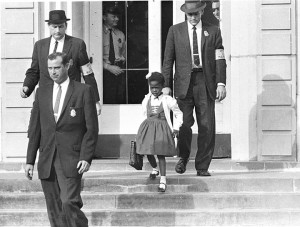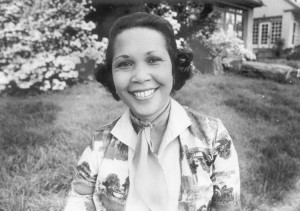Black History Month: Barbara Johns
Monday, February 8th, 2021February is Black History Month, an annual observance of the achievements and culture of Black Americans. This month, Behind the Headlines will feature Black pioneers in a variety of areas.
Can you imagine inspiring all the students in your school? Maybe you already have. You might have inspired them to establish a recycling program. You might have urged students to talk with teachers and administrators about having a more diverse curriculum.
In 1951, at the age of 16, the Black civil rights activist Barbara Johns (1935-1991) inspired all the students in her school. She led a walkout of her segregated high school in protest of poor and unequal school conditions. Segregation is the separation of people by race. Johns’s walkout helped launch the desegregation movement in the United States.
Barbara Rose Johns was born on March 6, 1935, in the Harlem neighborhood of New York City. During World War II (1939-1945), Johns moved to Prince Edward County, Virginia, to live with her grandmother. Johns attended the segregated Robert Russa Moton High School in Farmville, Virginia. The school’s facilities were inadequate to handle its students. Although the school was constructed to hold about 200 students, more than 400 students attended. Classes were held in school buses and in the auditorium. When parents asked the school board for additional space, several tar-paper shacks were built.
In the 11th grade, after years of frustration, Johns began mobilizing students to protest the poor and unequal school conditions. On April 23, 1951, the students—led by Johns—left the school and did not return for two weeks. The protest attracted the attention of the National Association for the Advancement of Colored People (NAACP). Lawyers from the organization agreed to help the students, as long as the students agreed to sue for an integrated (combined) school, rather than simply improved conditions at the all-Black school. The students agreed, and the suit became known as Dorothy E. Davis et al v. County School Board of Prince Edward County, Virginia. It became one of several cases consolidated into the landmark case Brown v. Board of Education of Topeka. In that case, in 1954, the Supreme Court of the United States declared racial segregation in public schools to be unconstitutional.
After organizing the walkout, Johns began receiving death threats. So, she moved to Montgomery, Alabama, to live with relatives and finish school. Johns married William Powell in 1954. She became known as Barbara Johns Powell. The couple raised five children. Johns attended Spelman College in Atlanta, Georgia, before earning a master’s degree in library science from Drexel University in Philadelphia, Pennsylvania, in 1979. She became a librarian in the Philadelphia public school system. Johns died of bone cancer on Sept. 25, 1991.
In 2020, it was announced that a statue of Barbara Johns would be placed in Statuary Hall in the United States Capitol, representing the state of Virginia. It was to replace a statue of the Confederate General Robert E. Lee, which was removed for its association with racism and the legacy of slavery.

Six-year-old Ruby Bridges is escorted by United States deputy marshals at William Frantz Elementary School in New Orleans, Louisiana, in November 1960. The first-grader was the only Black child enrolled in the school, where parents of white students boycotted the court-ordered integration law.
Credit: AP/Wide World
Ruby Bridges (1954-…) is another important figure in the history of integrated schools. She became one of the first Black children to integrate an elementary school in the Deep South region of the United States. In 1960, as a 6-year-old first-grader, she was the only Black student to enter the all-white William Frantz Elementary School in New Orleans. On Nov. 14, 1960, federal marshals escorted Bridges on her first day of school. The child was met by angry mobs. Parents of white students boycotted the court-ordered integration and took their children out of the school.
Bridges was taught by a white teacher named Barbara Henry, and she was the only student in her class for the entire school year. By the time Bridges entered second grade, Frantz Elementary had been successfully integrated. There were no more protests, and Bridges was able to attend the school unescorted.



